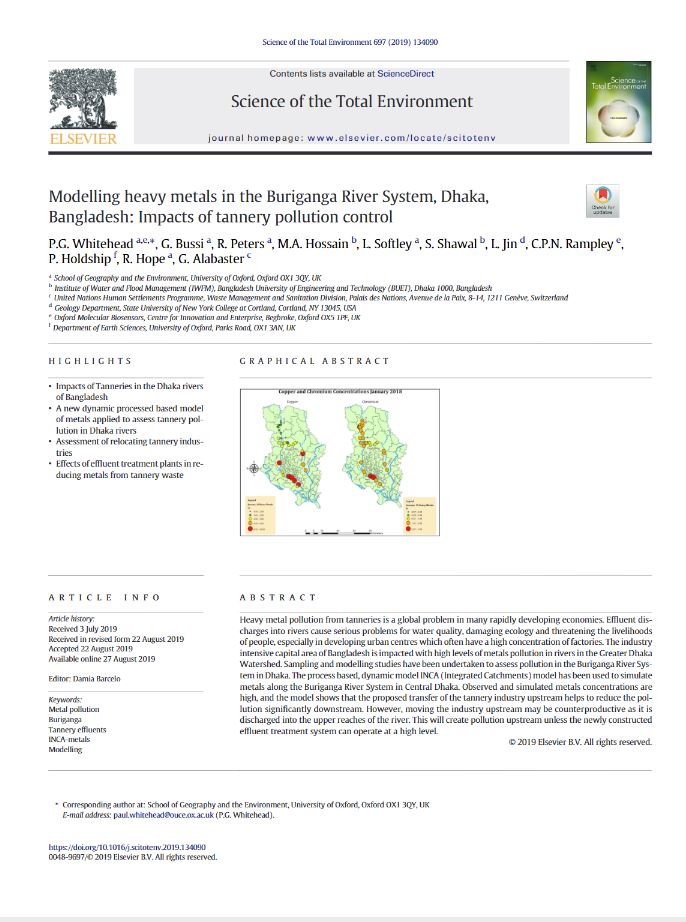Authors: Whitehead, P. G., Bussia, G., Peters, R., Hossain, M.A., Softley, L., Shawal, S., Jind, L., Rampley, C.P.N., Holdship, P., Hope, R., Alabaster, G
Heavy metal pollution from tanneries is a global problem in many rapidly developing economies. Effluent discharges into rivers cause serious problems for water quality, damaging ecology and threatening the livelihoods of people, especially in developing urban centres which often have a high concentration of factories. The industry intensive capital area of Bangladesh is impacted with high levels of metals pollution in rivers in the Greater Dhaka Watershed. Sampling and modelling studies have been undertaken to assess pollution in the Buriganga River System in Dhaka. The process based, dynamic model INCA (Integrated Catchments) model has been used to simulate metals along the Buriganga River System in Central Dhaka. Observed and simulated metals concentrations are high, and the model shows that the proposed transfer of the tannery industry upstream helps to reduce the pollution significantly downstream. However, moving the industry upstream may be counterproductive as it is discharged into the upper reaches of the river. This will create pollution upstream unless the newly constructed effluent treatment system can operate at a high level.

